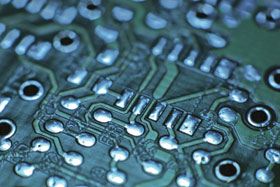

Wireless failures at home or in the office will be an inconvenience until a replacement device is installed. Wireless network failures in industrial applications, however, can jeopardise the safety of onsite personnel, damage expensive equipment, and possibly, translate into thousands of dollars per minute in production losses. In addition to network redundancy, industrial operators must also assess the application environment for elements that can impact network performance, compromise device reliability, or lead to unplanned system downtime.
Many industrial wireless applications, such as those for mining, railway, and oil & gas, are deployed in harsh environments and require the use of industrial grade devices. While some environmental factors are obvious, such as extreme temperatures and moisture, there are other elements that are not so apparent but can also quickly disable an unprotected device. Below is a list of environmental conditions and effects commonly found in industrial wireless applications that can cause a device to malfunction or fail entirely:
* Power interference.
* Magnetic field emissions.
* Flammable gases.
* Extreme temperatures.
* Humidity and moisture.
* Airborne particles and contaminants.
* Shock and vibration.
Electromagnetic susceptibility (EMS)
According to the International Electrotechnical Commission (IEC), EMS is defined as, ‘The inability of a device, circuit, or system to perform without degradation in the presence of an electromagnetic disturbance.’ Below are common types of electromagnetic disturbances that can interfere with device operation.
Electrostatic discharge (ESD)
ESD is the sudden transfer of static electricity between two objects with different electrical potentials. For example, factory workers wearing rubber boots and gloves can easily accumulate high levels of static electricity. Physical contact with wireless devices can discharge several kilovolts (kV) of static electricity and permanently damage internal circuitry.
Surge/burst/electrical fast transients (EFT)
Switching disturbances, short circuits, and especially lightning strikes, can inject high-level voltage spikes to cause serious damage to wireless devices. Surge protection devices such as transient voltage surge suppressors, metal oxide varistors and gas discharge tubes, are necessary to provide industrial grade protection against electrical transients.
Electrical field emissions (radiated)
Not to be confused with conducted electromagnetic emissions, electrical field emissions can affect almost every device. Electromagnetic radiation can be emitted by one device to generate RF currents in surrounding devices, causing electromagnetic disturbances and even possibly damaging a device. RF shielding, such as metallic device housings, can effectively repel electrical field emissions. Antenna isolation, as described in the next section, can also eliminate the damaging effects caused by electromagnetic radiation.
Galvanic isolation protection and ingress protection
Transformers are generally used for changing voltages, but when used for circuit isolation, isolation transformers can transfer power between two physically separated circuits to provide protection against electrical shocks and prevent excessive electrical currents from entering the system when ground loops have different electrical potentials. Antennas on wireless devices can also be galvanically isolated to provide total isolation of internal device circuitry and further protection from electromagnetic disturbances.
Ingress protection is highly desirable for outdoor applications, where precipitation or debris can penetrate the device housing causing system performance deterioration and even permanent damage to the circuit boards. Ingress protection ratings are used to indicate precise information about the level of protection a device offers against solid particles and liquids. For example, a wireless access point with an IP68 rating is completely airtight and can be submersed under water for long periods of time. See below for more detailed information about ingress protection.
Shock/vibration protection
Wireless connectivity is generally deployed for industrial applications where network flexibility is required, especially for moving vehicles, heavy machinery, and job sites that are constantly relocating, which can expose wireless devices to shock and vibration. Long-term exposure to shock and vibration can eventually result in electrical shorts, broken solder joints, loose components and cracked device housings.
Shock and vibration can also disable a wireless device by shaking loose wires for power, data and redundancy. Power, data, and redundant connections should be securely fastened to the device with terminal block, M12, or QMA connectors to prevent unintentional disconnections.
Industrial wireless networks need industrial grade devices
Conventional wireless networks typically provide only a best-effort level of service and do not guarantee the user a level of service for packet delivery, transmission speed, or redundancy. Industrial wireless networks with mission-critical applications will have low latency-tolerance and must operate uninterrupted with high reliability, which can only be ensured with the deployment of industrial-grade wireless devices.
What many operators may not realise, and where many industrial wireless devices can fail, is that the use of commercial grade devices can present unforeseen vulnerabilities. Deploying a fully-industrial wireless network will require a greater initial investment, but the benefits of improved network uptime, enhanced network performance and reduced maintenance costs, will all contribute to a lower total cost of ownership.
| Tel: | +27 11 781 0777 |
| Email: | info@rjconnect.co.za |
| www: | www.rjconnect.co.za |
| Articles: | More information and articles about RJ Connect |
© Technews Publishing (Pty) Ltd | All Rights Reserved